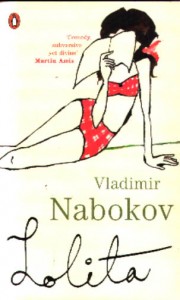Would you listen to a real paedophile talk about it? …believe anything he says? …listen to him talk about it? …like to see him do it? If yes, the novel and film I present in this series is not for you. If no, then you agree with Vladimir Nabokov in that paedophilia does not belong to a moralising society, but to art, where taboos of social life (in the broad sense) can be expressed. Art is the sublime of euphemism, as it can address such prohibited topics of society that no politically-correct, delicate phrasing may ever express without provoking the expected cultural anxiety.
One can imagine the abundantly rich and artistic language of Nabokov’s Lolita as the self-defensive or self-treating rhetoric of the imprisoned paedophile and murderer, Humbert Humbert(This is no typo!). But, one can also imagine Lolita as the brilliantly euphemistic treatment of a topic hardly expressed in canonised literature before. Several parallel euphemistic codes are interwoven into the novel’s text(ture). From the many such tracks analysed by scholars, I’ll focus on the two best exploited by Stanley Kubrick in his film-adaptation, Lolita (1962).
Márta Pellérdi notices the symbols faun and nymph as encapsulated within the characters Humbert and Lolita. Humbert in his narrative sometimes refers to himself as faun or faunlet, while he countlessly calls Lolita – the object of his obsession – a nymphet. These symbols create a double-link: they bind Nabokov’s characters to the symbols of the mythical creatures through analogy, while, simultaneously, they connect Nabokov’s novel to the works of the decadent artists, who often used the two creatures as their vehicle of message, both in fine-arts and literature.
Marcus Amit interrogates the uses of the unreliable-narrator, who’s vacillating between other-deception and self-deception. Nabokov’s narrator has a split personality, he sometimes seems a self-conscious sinner, who elaborates a brilliant rhetoric to absolve himself, and other times he appears a delusional self-deceptive, who doesn’t (want to) understand the immorality of his actions. A mit argues that these personalities are both present in Lolita and we can never be sure whether the unreliable Humbert tries to deceive us readers, or himself (and actually believes what he’s saying).
mit argues that these personalities are both present in Lolita and we can never be sure whether the unreliable Humbert tries to deceive us readers, or himself (and actually believes what he’s saying).
I will dedicate a blog-post to each of the mentioned threads of Lolita’s narrative texture, i.e. the use of the faun and nymph and the duality of the unreliable narrator, although, I believe, both devices serve to place Humbert’s narrative between the spoken and unspoken, real and unreal. This is the function of euphemism. While elaborating on these euphemistic tracks, I will also look at how Kubrick transplants them in film. He evidently preserves euphemisms, but requires different devices to do so.
Euphemism both asserts and denies its object, by alluding to it and denying its direct expression at the same time. By this, it inevitably intersects with Jacques Derrida’s concept of the supplement, which also alludes to the object it supplements, and also denies it, by its replacement. This similarity between euphemism and supplement will be the tool of merging the aforementioned two threads in the concluding post.
Nemes Zsolt
Sources of pictures: https://constructiveconsumption.wordpress.com/2013/07/16/lolita-1962/
http://tervezgetunk.blogspot.hu/2011/03/konyvborito-1.html


